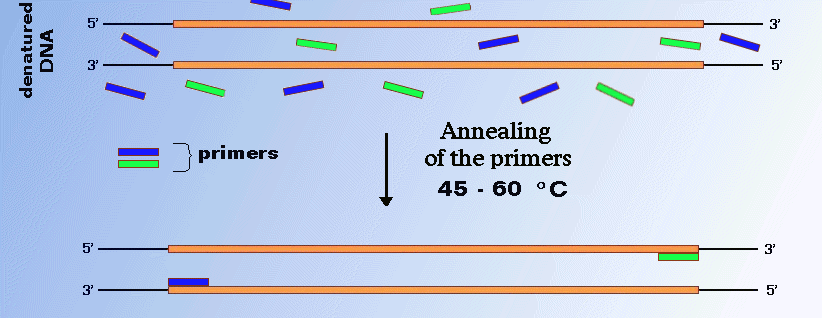
To copy DNA, polymerases require a short sequence called a primer. The PCR uses two primers, each complementary to opposite strands of the region of DNA, which have been denatured by heating. They cannot "anneal" to the strand of DNA at temperature 95 degrees centigrade, so the test tube is cooled to 45 - 60 degrees C. The temperature of this step depends on the melting temperature of the primer - template hybrid. If temperature is too high the primers cannot anneal efficiently, and if the annealing temperature is too low the primers may bind nonspecifically to the template. They are present in large excess, so this step can be repeated a lot of times. The primers are designed so that each primer directs the synthesis of new strand of DNA towards the other (Figure below). Thus primer "green" directs the synthesis of a strand of DNA which can then be primed by primer "blue" and vice versa.
